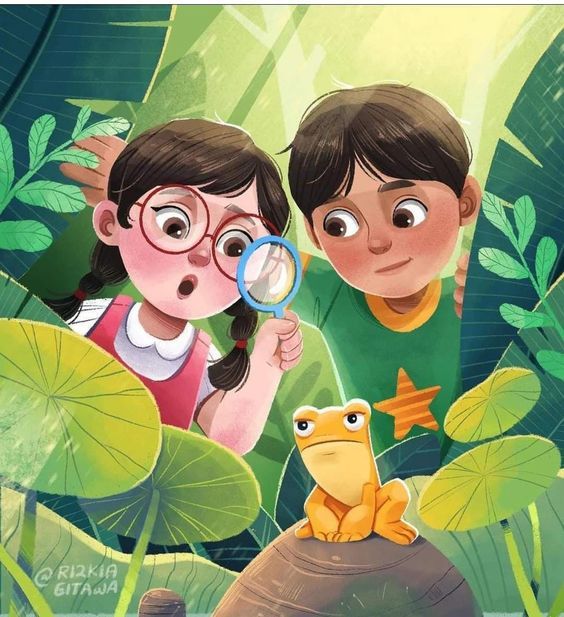
How to Balance Quality and Cost in Children’s Book Illustration
Children’s books are magical gateways to imagination, sparking creativity, curiosity, and emotional growth in young readers. Whether you are a self-published author, a small publishing house, or even a parent looking to create a personal keepsake, one of the biggest challenges in children’s publishing is balancing quality and cost in book illustration. Illustrations breathe life into words, making them accessible and appealing to children. However, the journey to finding the right illustrator often comes with financial hurdles.
In this article, we will explore how to strike a balance between affordability and quality when hiring children’s book illustrators, what factors influence pricing, and tips for maximizing your budget without compromising on artistic standards.
Why Illustration Quality Matters
When it comes to children’s books, illustrations are more than just decorations—they are part of the storytelling itself. Young readers often engage with visuals before they fully understand the text, making artwork a vital tool for comprehension and enjoyment. High-quality illustrations:
- Enhance storytelling by visually interpreting the narrative.
- Capture attention in a crowded marketplace.
- Build emotional connections between characters and readers.
- Increase educational value by helping children link images with words.
Because illustrations carry such weight, authors must be careful not to cut costs at the expense of quality. At the same time, overspending can be impractical, particularly for independent authors with limited budgets.
What Influences the Cost of Illustration?
Before finding ways to balance quality and cost, it’s important to understand the main factors that affect pricing:
- Artist Experience – Established illustrators with a strong portfolio charge more than emerging artists, but they also bring reliability and a proven style.
- Art Style – Simple line drawings cost less than detailed, full-color illustrations with intricate backgrounds.
- Number of Illustrations – A typical children’s picture book requires anywhere from 15 to 40 illustrations, making quantity a major cost driver.
- Medium and Tools – Traditional hand-painted artwork may be more expensive compared to digital illustrations, though this varies by artist.
- Timeline – Rush projects cost more since they demand greater time commitment.
Understanding these factors helps authors plan realistically and avoid unexpected costs.
Finding Affordable Options Without Compromising Quality
Balancing quality and cost requires a combination of creativity, research, and negotiation. Here are strategies to achieve that balance:
1. Explore Emerging Talent
Many new illustrators, including recent art school graduates, are eager to build their portfolios. Their rates are often lower than seasoned professionals, but they can still deliver excellent work. Platforms like Behance, Dribbble, and DeviantArt are great places to discover fresh talent.
2. Consider Global Artists
Artists from different regions of the world may offer lower rates due to cost-of-living differences. Hiring internationally can expand your options and allow you to find talented yet affordable children’s book illustrators who fit your budget.
3. Choose Hybrid Styles
Instead of full-page, detailed illustrations on every page, consider mixing styles—such as combining simple spot illustrations with full-page artwork at key moments. This approach reduces costs without sacrificing quality.
4. Negotiate Scope
Be clear about what you need and discuss ways to adjust the project scope. For example, fewer background details or limited color palettes can significantly cut costs.
5. Use Freelance Platforms
Websites like Upwork, Fiverr, and Reedsy host illustrators at varying price points. These platforms let you compare portfolios, read client reviews, and set budgets upfront.
Setting a Realistic Budget
Budgeting wisely ensures you can afford quality while avoiding unnecessary expenses. Here’s how to approach it:
- Research Average Costs – Children’s book illustrations typically range from $50 to $500 per illustration depending on complexity and experience.
- Prioritize Key Pages – Allocate more budget for the cover and pivotal story scenes while simplifying secondary illustrations.
- Think Long-Term – Investing in quality illustrations can improve sales and reader satisfaction, making it a worthwhile expense.
It’s important to strike a balance—while hiring cheap, unskilled illustrators may save money upfront, poor artwork can negatively impact your book’s reception.
Collaborating Effectively with Illustrators
To maximize both quality and affordability, communication is key. Here are some best practices:
- Provide a clear brief with storyboards, character descriptions, and reference images. This reduces revisions and saves time.
- Agree on milestones for drafts, sketches, and final artwork. A structured timeline prevents misunderstandings.
- Request sample art before committing to the full project. This ensures the illustrator’s style matches your vision.
- Be flexible—sometimes a simpler artistic approach can still achieve powerful results.
A good relationship with your illustrator leads to smoother collaboration and better outcomes.
Affordable Children’s Book Illustrators: A Middle Ground
For many independent authors, the dream is to find affordable children’s book illustrators who can still deliver captivating, professional work. This balance is achievable with careful planning, smart sourcing, and open communication. By focusing on illustrators who are passionate about children’s literature but still establishing their careers, authors can secure quality at a reasonable rate.
Common Mistakes to Avoid
While aiming for affordability, authors should watch out for these pitfalls:
- Sacrificing too much quality – Poorly drawn illustrations can harm your book’s credibility.
- Not protecting rights – Always discuss licensing and ownership. Make sure you retain rights to use illustrations for publishing and marketing.
- Underestimating time – Illustration is a time-consuming process. Unrealistic deadlines can either raise costs or lead to rushed results.
- Skipping contracts – A written agreement protects both you and the illustrator.
Avoiding these mistakes helps ensure both cost-effectiveness and professionalism.
Conclusion
Balancing quality and cost in children’s book illustration is not about choosing one over the other—it’s about finding harmony. By understanding what drives pricing, exploring emerging or international talent, and setting clear expectations, authors can secure illustrations that bring their stories to life without overspending.
The best children’s books aren’t always the ones with the highest budgets—they’re the ones that blend heartfelt storytelling with visuals that capture a child’s imagination. With careful planning and the right illustrator, it is absolutely possible to achieve both quality and affordability.


